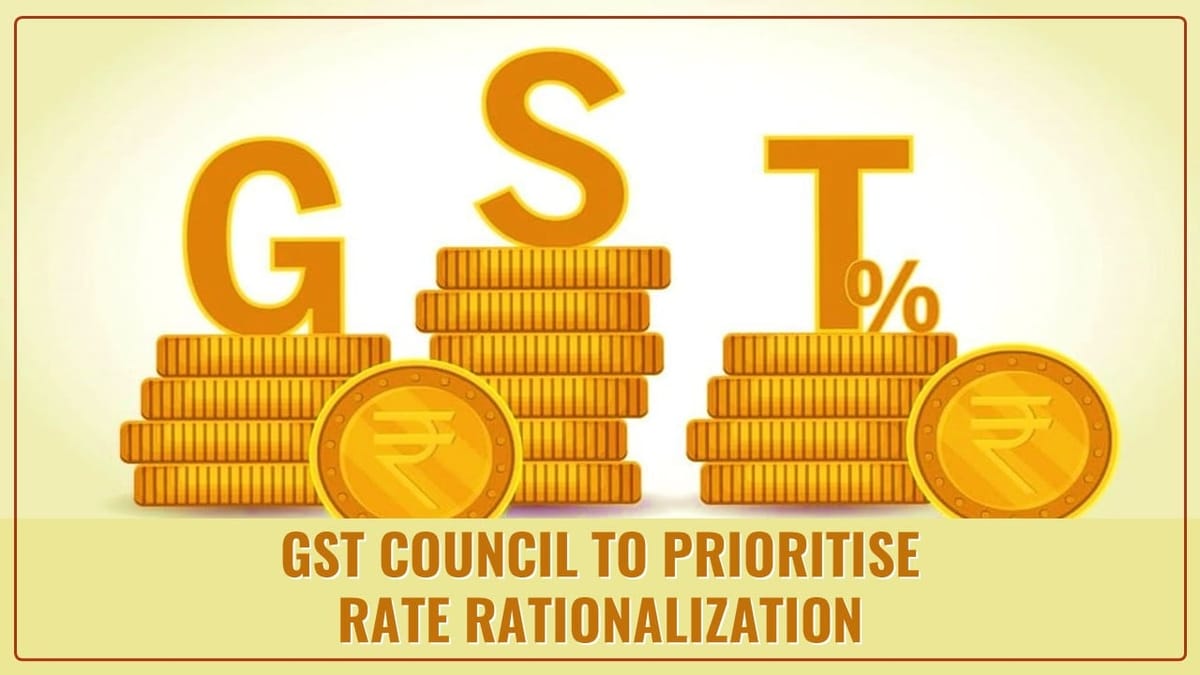Reetu | Mar 22, 2024 |

GST Council to prioritise Rate Rationalization in next Council Meeting in FY24-25
In what may be a game changer for the existing GST regime, the government is expected to investigate the prospect of transitioning to a 3-slab structure in the coming financial.
According to individuals familiar with the situation, “Rate rationing is likely to be a top priority for the GST Council in the coming financial year, and the council could begin discussions on moving to a 3-slab structure as the next phase of GST.”
Well! According to sources, rationalisation might move products across slabs. However, while performing the rationalisation exercise, the government will be mindful of the total tax incidence.”
Former Finance Minister Arun Jaitley proposed rate rationalisation. Following the rollout of GST in 2017, then-Finance Minister Arun Jaitley hinted at the possibility of transitioning to a three-slab structure. Jaitley said in August 2017 that rates under the Goods and Services Tax (GST) may be rationalised as its implementation continues.
“I admit that as GST progresses, there will be opportunities to rationalise rates. There is likely to be considerable possibility for the two standard rates of 12% and 18% to be combined into one over time. That is a reasonable idea and a suggestion,” Jaitley remarked in response to the debate over the two GST bills in Jammu and Kashmir.
However, when it comes to the current rate rationalisation discussion, sources say that “the 28% slab is likely to remain as is, and the slabs of 5%, 12%, and 18% are likely to be changed.”
“Correction of the inverted duty structure will also be a crucial part of the discussion,” sources stated.
The GST council is also scheduled to meet only after the new government takes office following the impending general elections.
The action follows the government’s view that GST revenues are stable. “Government is confident of garnering Rs.1.8 lakh cr of average monthly revenue in FY25, which could be a good enough reason to play around with the slab structure,” a source said.
The GST council’s future course of action will be guided by a discussion and presentation of a detailed rate rationalisation report by a Group of Ministers.
A group of ministers (GoM) panel on the issue was already in place, chaired by Karnataka’s FM and CM, BS Bommai, but it was only able to present an interim report and a few revisions to the inverted duty structure at the Chandigarh GST council meeting in June 2022.
However, the panel requested extra time to complete its report.
Following this, the panel was reformed in November 2023, with Suresh Khanna, the Finance Minister of Uttar Pradesh, serving as chairman. However, this panel has not even met once.
According to sources, the panel will only meet following the results of the forthcoming general elections. The GoM’s member states include Uttar Pradesh, Goa, Bihar, Rajasthan, West Bengal, Karnataka, and Kerala.
It remains to be seen when the GoM will meet and give its views to the GST Council.
In case of any Doubt regarding Membership you can mail us at contact@studycafe.in
Join Studycafe's WhatsApp Group or Telegram Channel for Latest Updates on Government Job, Sarkari Naukri, Private Jobs, Income Tax, GST, Companies Act, Judgements and CA, CS, ICWA, and MUCH MORE!"